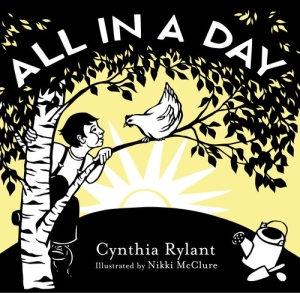Thursday January 21, 2010
It was the second day of my new environmental psychology class for undergrads at Lewis and Clark College. I offer examples of various kinds of environmental psychology and ecopsychology. I talked about the influential researcher Robert Cialdini and his well-known Petrified Forest Study. We talked about Paul Stern and Gerald Gardner and what exactly the steps are to, as the scientists say, an “environmentally-relevant behavior.” And then, to bring this all home to the students, I talked about an interview I heard on the radio that morning, between author Cynthia Rylant and Nikki McClure, a papercut artist and illustrator from Olympia, WA whose images are popular in Portland. They had just collaborated on the children’s book All in a Day.
McClure was talking about how she found her inspiration for the illustrations and she said something I thought was profound—and relevant in a class that looks at things like environmental identity. McClure said: “I looked out my window to the birch trees that I planted in my front yard when I was a starving artist. They were like anchors to the world I created for myself.” Anchors to the world she had created: What better way to describe the importance of the landscape, or our spaces for us, for our identity.

